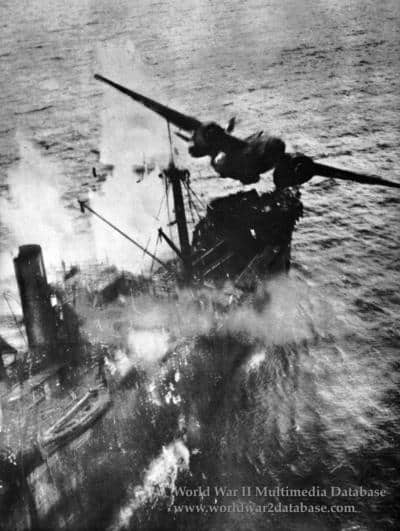U.S. Navy auxiliary ships were constructed with amianto components for decades. The support, defense, and numerous other roles of auxiliary ships were crucial to the U.S. military. Unfortunately, veteranos who served on them are now at risk of asbestos illnesses.
If you or a loved one have mesotelioma, asbestos-related lung cancer, or asbestosis, you may be eligible for a large amount of compensation. There is over $30 billion in asbestos trust funds set up for those diagnosed with an asbestos-related illness. Complete nuestro formulario para recibir nuestro Paquete de Compensación Financiera gratuito. Nuestro paquete contiene información sobre abogados con experiencia en mesotelioma en su área y cómo presentar una demanda. afirmar Para fondos fiduciarios de asbesto, cómo recibir el pago en 90 días y más.


Paquete de compensación financiera GRATUITO
- Información sobre despachos de abogados que recuperarán su INDEMNIZACIÓN MÁS ALTA
- Aprenda cómo cobrar en 90 días
- Solicite su parte de $30 mil millones en fondos fiduciarios

About Auxiliary Ships
Auxiliary ships have always been an important part of the Navy. Auxiliary ships are responsible for replenishing supplies and food to other vessels, transporting fuel, and transporting boats and sailors.
Some auxiliary ships tow damaged vessels to safety, while others served as defense vessels. Auxiliary ships vary significantly in size.
Some of the most common types of auxiliary ships developed by la Marina de los EE. UU. include:
- Crane ships (AB)
- Colliers (AC)
- Ammunition ships (AE)
- Store ships and combat store ships (AF and AFS)
- Icebreakers (AGB)
- Environmental research ships (AGER)
- Major communication relay ships (AGMR)
- Survey ships (AGS)
- Hospital ships (AH)
- Cargo ships (AK)
- Vehicle cargo ships (AKR)
- Oilers – fuel oil tankers (AO)
- Transport ships (AP)
- High-speed transport ships (APD)
- Aircraft ferry (AKV)
- Net laying ships (AN)
- Repair ships (AR)
- Ocean tugs (ATO)
- Seaplane tenders (AV)
- Aircraft escort vessels (AVG)
- Distilling ships (AW)
- Unclassified ships (IX)
Although there were once numerous types of auxiliary ships in use, the Navy doesn’t currently have many active today.
Along with 16 Barracks ships, 14 dry cargo ships, and 13 Unclassified Ships, the only active auxiliary ships today include the following:
- USS Emory S Land
- USS Mercer
- USS Frank Cable
- USS Neodesha
- USS Pueblo
Why Did the Navy Use Asbestos in Auxiliary Ships?
The U.S. Navy used asbestos on ships because of its insulating properties. Insulation was the most common use of asbestos in all industries. On ships, being able to protect against heat and fire is essential.
During the decades it was used, asbestos was readily available from mines, was inexpensive, and had all the properties needed for shipbuilding.
When Was Asbestos Used on Navy Auxiliary Ships?
El U.S. Navy constructed ships with asbestos materials from approximately the 1930s through the 1970s. Archived military documents and memos showed that asbestos-containing products were used on auxiliary ships from 1944 until 1966.
The Navy stopped using asbestos because of the risks to human health. Exposure is always a risk near asbestos, but higher on ships. People working on ships are more likely to inhale asbestos fibers because of the close quarters, limited ventilation, and long periods of time spent onboard.
Where Was Asbestos Uses in Auxiliary Ships?
As with every other vessel constructed by the military before the 1970s, auxiliary ships were built with asbestos-containing products. The military used the toxic mineral for its affordability, ease of use, and resistance to heat and fire. Over 250 asbestos-containing products were once used to build vessels.
Asbestos was used in a variety of products and equipment on auxiliary ships, including:
- Calderas
- Juntas
- Ship decks
- Walls
- Aislamiento
- Mamparos
- Cemento
- Pipes
Johns Manville was one of the leading suppliers of asbestos to the military. It was an asbestos and construction materials company that faced numerous mesothelioma lawsuits and ultimately filed for bankruptcy and reorganized.
Other asbestos manufacturers that supplied asbestos materials that went into auxiliary ships include Eagle Picher y Union Asbestos and Rubber Company.
Who Was Most at Risk of Asbestos Exposure on Auxiliary Ships?
Anyone serving on ships that contained asbestos was at risk of exposure and later illness. Some veteranos had higher risks based on their roles and where in the ships they worked:
- Trabajadores de la sala de calderas
- Trabajadores de la sala de máquinas
- Pump room workers
- Maquinistas
- electricistas
- Instaladores de tuberías
- bomberos
Which Auxiliary Ships Contained Asbestos?
Nearly every ship built for the U.S. Navy between the 1930s and 1970s contained asbestos. These are some of the auxiliary vessels with confirmed asbestos and their commissioning dates:
- USS Caliente,1943
- USS Caloosahatchee,1950
- USS Sangamon, 1942
- USS Carpellotti,1959
- USS Delta, 1952
- USS Wyandot, 1944
- USS Hector, 1949
- USS Cabot, 1943
- USS Cowpens, 1943
- USS Franklin, 1943
- USS Monterey, 1943
- USS San Jacinto, 1943
- USS Myrmidon, 1945
- USS Arcadia, 1945
- USS General G.O. Squier, 1943
- USS Vulcan, 1941
- All AP-designated ships built in the 1940s
The History of Auxiliary Ships in the U.S. Navy
The U.S. Navy has used auxiliary ships since the 1800s. They have more varied roles than any other type of ship. Unlike some types of Navy vessels, many auxiliary ships remain active during peacetime.
Auxiliary Ships During World War I
The U.S. Navy rapidly expanded its fleet at the onset of WW I. This included the acquisition of private vessels that were transformed into Navy auxiliaries. These vessels received the designation ID.
The primary role of acquired auxiliary ships in WW I was transport. These vessels transported people and supplies. They also moved vessels around ports and assisted with duties within ports and harbors.
At the end of the war, the Navy decommissioned its acquired auxiliaries and began building a real fleet from scratch. Some of the new auxiliary ships from this period were the AP transport vessels.
Between WW I and WW II, the Navy built more than 60 auxiliary ships. This included more diversity of vessel types: ammunition ships (AE), repair ships (AR), and more.
World War II
As the possibility of entering WW II loomed, the Navy began building its fleet once again, including building more auxiliary vessels and modernizing older ones. Repair ships were particularly important for maintaining a strong fleet, and at this time, the Navy introduced the landing craft repair ships (ARL).
Also vital to the effort were the fuel oil tankers (AO), used to transport fuel to other ships and land installations during the war. Other auxiliary ships built during WWII include the special barracks and store ships (AF).
Korean and Vietnam Wars
The Korean War brought about an expansion of the auxiliary fleet, although it was much smaller than the expansion during WW II. Getting supplies to Korea was vital, and several auxiliary ships, either new or recommissioned, served this role.
Ammunition ships (AE) became very important during the Vietnam War. Auxiliary ships that transported people became less important during this period. The military began using more long-range passenger aircraft to move personnel.
The Modern Auxiliary Fleet
The auxiliary fleet is much smaller today than before but still plays a crucial role. The Navy created a new class of auxiliary vessels in 2006, the dry cargo and ammunition ships (AKE). Also active today are barracks, dry, and vehicle cargo ships.
Much of the modern auxiliary fleet is now part of the Military Sealift Command. These are considered non-commissioned ships rather than decommissioned. They are manned by civilians and are used to supply Navy vessels and perform other duties.
Benefits for Navy Veterans With Mesothelioma
U.S. Navy veterans who constructed, repaired, or worked aboard auxiliary ships are at the highest risk of developing asbestos illnesses. These include mesotelioma maligno, asbestosis, and asbestos-related lung cancer.
Asbestos illnesses are debilitating and often terminal. Veterans diagnosed with these conditions can seek compensación through the U.S. Department of Veterans Affairs (Virginia) and private legal actions. Some of the options include:
- Disability benefits. The VA gives mesothelioma and asbestos lung cancer a disability rating of 100%. Veterans with these diagnoses are eligible for full monthly disability compensation. If they need in-home care, they can apply for additional compensation.
- Dependent benefits. Veterans can also receive additional compensation for dependents. Family of veterans who pass away from asbestos illnesses can apply for dependency and indemnity compensation and burial benefits.
- Medical care. Veterans with asbestos illnesses can receive specialist medical care at VA facilities throughout the country.
- Mesothelioma lawsuits. Veterans cannot sue the military, but they can sue the asbestos companies that supplied Navy vessels to seek a settlement. This type of compensation does not affect a veteran’s VA benefits.
- Fondos fiduciarios para el amianto. Many asbestos suppliers filed for bankruptcy in the face of lawsuits. When they did this, they created asbestos trust funds to compensate victims. Veterans may qualify for one or more trusts and can make a claim for compensation.
If you served in the military and received a diagnosis of asbestos illness, contact an asbestos attorney. They can help you understand your legal options and seek compensation and benefits.
Additional Help and Information
Recuerde completar nuestro formulario para obtener su Paquete de Compensación Financiera gratuito, con información sobre abogados con experiencia en asbesto y mesotelioma en su zona. Tenga en cuenta que si padece mesotelioma, cáncer de pulmón relacionado con el asbesto o asbestosis, podría tener derecho a una compensación considerable. Para obtener más ayuda, contáctenos en 800-793-4540.

Pablo Danziger
Revisor y editorPaul Danziger creció en Houston, Texas, y se licenció en Derecho en la Facultad de Derecho de la Universidad Northwestern en Chicago. Durante más de 25 años, se ha dedicado a representar a víctimas de mesotelioma y a otras personas afectadas por la exposición al asbesto. Paul y su bufete han representado a miles de personas diagnosticadas con mesotelioma, asbestosis y cáncer de pulmón, obteniendo indemnizaciones significativas para los clientes lesionados. Cada cliente es fundamental para Paul y atenderá todas las llamadas de quienes deseen hablar con él. Paul y su bufete se encargan de casos de mesotelioma en todo Estados Unidos.
Conéctese con el abogado especializado en mesotelioma Paul Danziger
Referencias
- NavSource. (n.d.). Auxiliary and Service Force Ships.
Recuperado de: http://www.navsource.org/archives/auxidx.htm - National Archives. (2021, June 17). U.S. Navy Ships – Auxiliary Ships.
Recuperado de: http://www.archives.gov/research/military/navy-ships/auxiliary-ships.html - NavSource. (2020, December 18). NavSource ONline: Amphibious Photo Archive. APL-39.
Recuperado de: http://www.navsource.org/archives/10/13/1339.htm - Absher, J. (2022, May 13). Asbestos Illness Related to Military Service. Military.com.
Recuperado de: http://www.military.com/benefits/veteran-benefits/asbestos-and-the-military-history-exposure-assistance.html - NavSource. (2019, March 9). NavSource Online: Service Ship Archive. IX-540.
Recuperado de: http://navsource.org/archives/14/09815.htm - The National Security Archive. (2014, January 23). USS Pueblo: LBJ Considered Nuclear Weapons, Naval Blockade, Ground Attacks in Response to 1968 North Korean Seizure of Navy Vessel, Documents Show.
Recuperado de: http://nsarchive.gwu.edu/NSAEBB/NSAEBB453/ - Naval History and Heritage Command. (2017, November 17). US Ship Force Levels 1886-Present.
Recuperado de: https://www.history.navy.mil/research/histories/ship-histories/us-ship-force-levels.html
